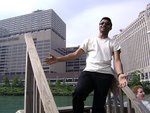Harry's journey will propel him forward to a final showdown with his arch enemy, and also send him backward into the past, to the house in Godric's Hollow where his parents died, to learn about his family history and the equally mysterious history of Dumbledore's family. At the same time, he will be forced to ponder the equation between fraternity and independence, free will and fate, and to come to terms with his own frailties and those of others. Indeed, ambiguities proliferate throughout "The Deathly Hallows": we are made to see that kindly Dumbledore, sinister Severus Snape and perhaps even the awful Muggle cousin Dudley Dursley may be more complicated than they initially seem, that all of them, like Harry, have hidden aspects to their personalities, and that choice — more than talent or predisposition — matters most of all.
Itis Rowling's achievement in this series that she manages to make Harry both a familiar adolescent — coping with the banal frustrations of school and dating — and an epic hero, kin to everyone from the young King Arthur to Spider-Man and Luke Skywalker. This same magpie talent has enabled her to create a narrative that effortlessly mixes up allusions to Homer, Milton, Shakespeare and Kafka, with silly kid jokes about vomit-flavored candies, a narrative that fuses a plethora of genres (from the boarding-school novel to the detective story to the epic quest) into a story that could be Exhibit A in a Joseph Campbell survey of mythic archetypes.
In doing so, J. K. Rowling has created a world as fully detailed as L. Frank Baum's Oz or J. R. R. Tolkien's Middle Earth, a world so minutely imagined in terms of its history and rituals and rules that it qualifies as an alternate universe, which may be one reason the "Potter" books have spawned such a passionate following and such fervent exegesis. With this volume, the reader realizes that small incidents and asides in earlier installments (hidden among a huge number of red herrings) create a breadcrumb trail of clues to the plot, that Rowling has fitted together the jigsaw-puzzle pieces of this long undertaking with Dickensian ingenuity and ardor. Objects and spells from earlier books — like the invisibility cloak, Polyjuice Potion, Dumbledore's Pensieve and Sirius's flying motorcycle — play important roles in this volume, and characters encountered before, like the house-elf Dobby and Ollivander the wandmaker, resurface, too.
The world of Harry Potter is a place where the mundane and the marvelous, the ordinary and the surreal coexist. It's a place where cars can fly and owls can deliver the mail, a place where paintings talk and a mirror reflects people's innermost desires. It's also a place utterly recognizable to readers, a place where death and the catastrophes of daily life are inevitable, and people's lives are defined by love and loss and hope — the same way they are in our own mortal world.
Courtesy: International Herald Tribune
Friday, July 20, 2007
Harry Potter and the Deathly Hallows-Final Book- Review by IHT author-II
Labels:
Harry Potter
Subscribe to:
Post Comments (Atom)

No comments:
Post a Comment